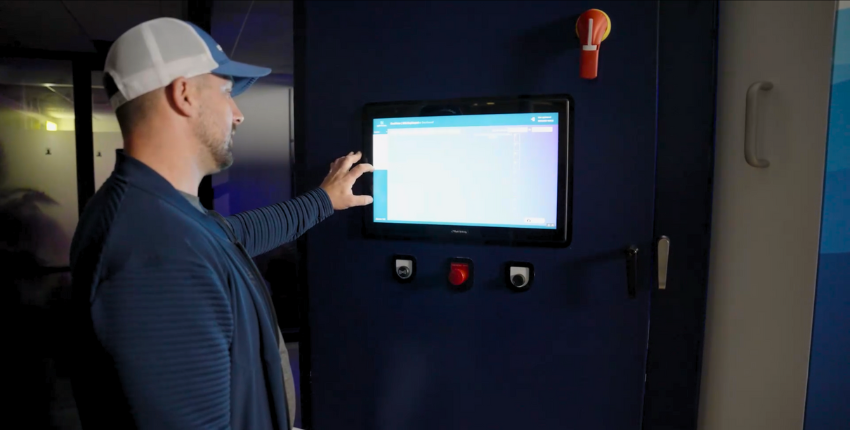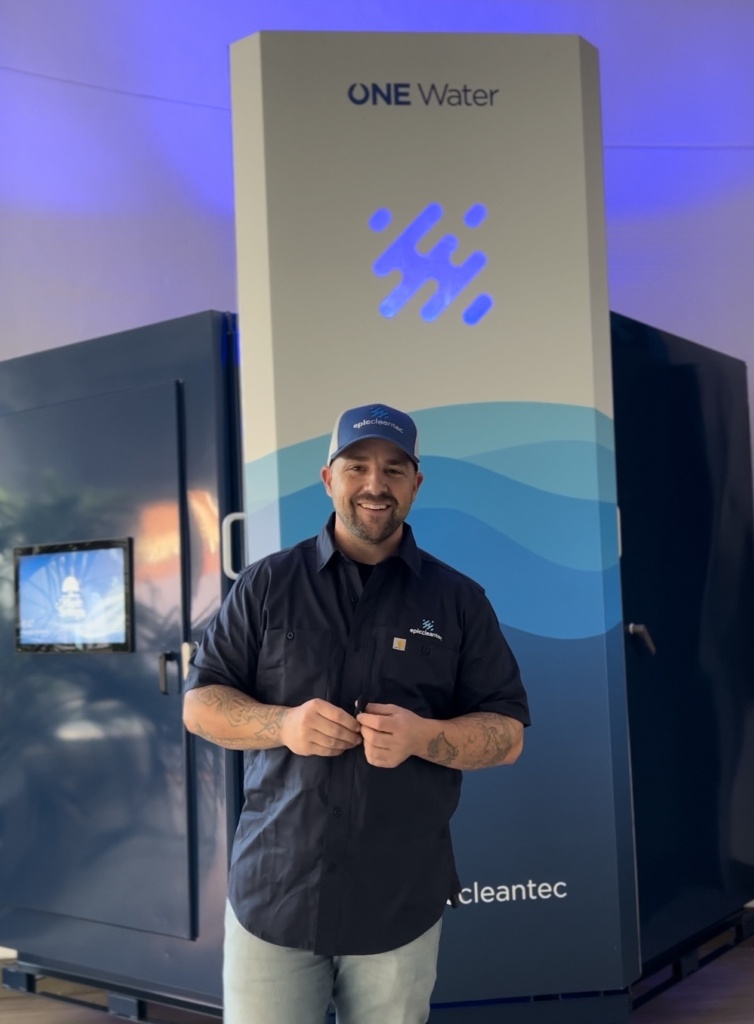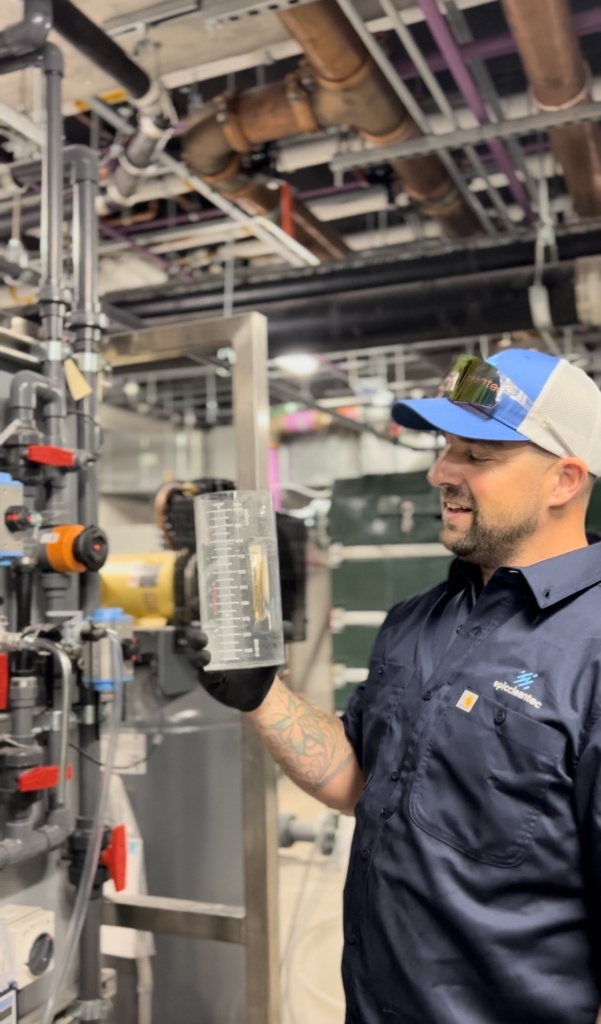Keys to successfully operating an onsite wastewater reuse system


A Q&A with our Director of Water Reuse Operations
Investing in an onsite wastewater treatment system is a long-term commitment toward sustainable water management and resilient building design. However, maintaining these in-building systems requires careful oversight from trained professionals to ensure the efficient and safe recycling of water in your building. A successful O&M team can protect your investment, optimize the performance of your reuse system, and quickly identify and address any issues that may arise.
Epic Cleantec is committed to providing exceptional ongoing operation and maintenance services for all onsite wastewater reuse system types – from rainwater and stormwater to greywater and blackwater. We deploy highly trained individuals to ensure the safety, reliability, and timely reporting for wastewater reuse system operations. Overseeing our O&M department is Ryan Pulley, Director of Water Reuse Operations. Get to know Ryan and his thoughts on what makes a successful wastewater reuse operation.
Question: Tell us about your background and experience in wastewater management.
Ryan: I am a Grade 3 wastewater operator and I have been in the wastewater sector since 2014. I have extensive maintenance and operational experience in the water and wastewater field. I’ve operated small packaged plants all the way to large-scale municipal treatment plants handling millions of gallons per day.
Q: What’s the difference in operator grades?
Ryan: Wastewater operator levels are based on qualifications, experience, and responsibilities, and range from Grade 1 through Grade 5. These can vary from one jurisdiction to another, but they generally follow a similar structure.
At the Grade 1 level, operators typically possess foundational knowledge in operating and maintaining wastewater treatment facilities, including basic equipment maintenance and safety protocols. As operators advance to Grade 5, their skillset becomes increasingly sophisticated, encompassing expertise in complex treatment processes, regulatory compliance, equipment troubleshooting, and leadership in managing larger and more intricate wastewater treatment systems.
Q: What are the keys to a successful wastewater reuse system operations program?
Ryan: I focus on the “three O’s” while maintaining system operations:
- Observation: We use our eyes, nose, and ears daily to collect data and catch any potential issues before they become bigger problems. I listen for pump problems, smell around for any odd odors, and visually inspect all system components to look for leaks or other issues.
- Operational excellence: I define operational excellence by consistently meeting or exceeding water quality requirements at each installation. Additionally, our team goes above and beyond what’s expected to deliver top notch customer service from start to finish. At Epic, we aren’t just delivering safe recycled water; we strive to provide a water reuse experience that owners, residents and tenants find value in.
- Operator safety: Personal safety is essential. Operators deal with chemicals, moving pieces of equipment, and raw wastewater daily so maintaining a clean workspace and wearing the proper personal protective equipment is key to ensuring we can do our job efficiently and safely.
Q: What are some issues you encounter when operating systems?
Ryan: For several of the systems that Epic is operating, I have seen design problems that create issues for operational efficiency. For example, floors that either don’t have enough drains or that slope away from the drains. We’ve also seen drains in inconvenient locations so that drain piping must run across walking paths to reach the drains, creating tripping hazards. I’ve encountered rooms without proper ventilation, which create hot and humid environments leading to corrosion, and rooms without hose bibs, which are convenient for equipment and floor washdowns.
Q: To follow up on that, what tips would you give the design community incorporating onsite water reuse systems?
Ryan: One thing is to factor in the needs of the operators that will be working in and accessing the rooms where these systems are installed. It’s important to add features like a utility sink and an eye wash station for safety. Leaving enough space for operators to service pumps and equipment and providing relatively easy access to receive chemical deliveries are must-haves. Part of Epic’s offerings is to serve as a trusted advisor for engineers and architects to help design spaces that make sense for operators and maximize limited square footage.
 Q: What does a typical day look like for you?
Q: What does a typical day look like for you?
Ryan: A typical day maintaining these systems involves routine checks of pumps, analyzers, and the health of the biological population — our systems employ biological treatment in which we mimic nature using living microbial environments to help clean the water. Additionally, I gather samples and calibrate any instrumentation that is on the preventative maintenance list for that day.
Q: What are the different testing requirements for the systems?
Ryan: Sampling requirements vary by system type (blackwater vs greywater), as well as by jurisdiction. However, sampling for Coliform, Biochemical Oxygen Demand (BOD), and Total Suspended Solids (TSS) will occur at least monthly, and sometimes more frequently depending on the mentioned variables above.
It’s important to recognize that onsite wastewater treatment systems are subject to regulations and guidelines set by local authorities. Regular preventative maintenance ensures that your system operates well and within your state and local government’s specified regulations. By staying compliant, you not only avoid penalties but also demonstrate your commitment to environmental water responsibility and protecting the health of the project’s residents and/or tenants.

